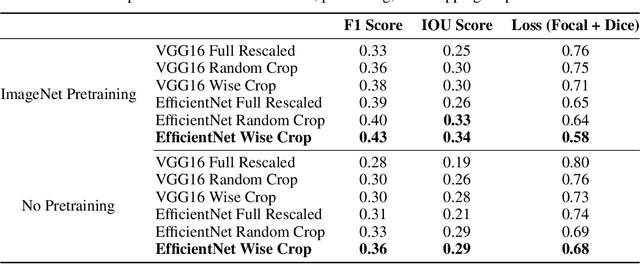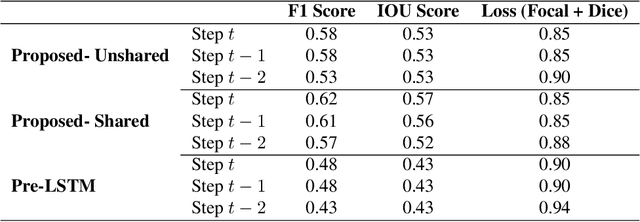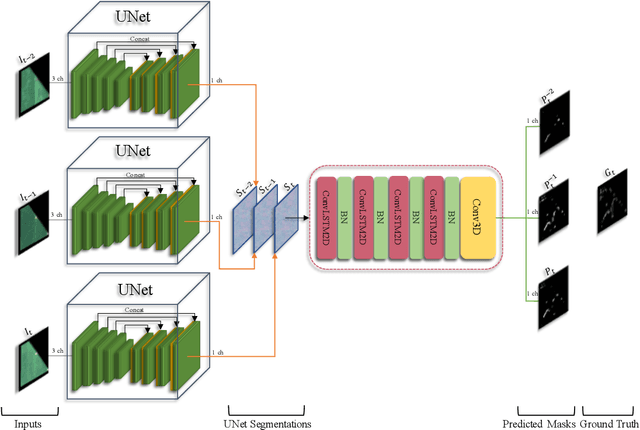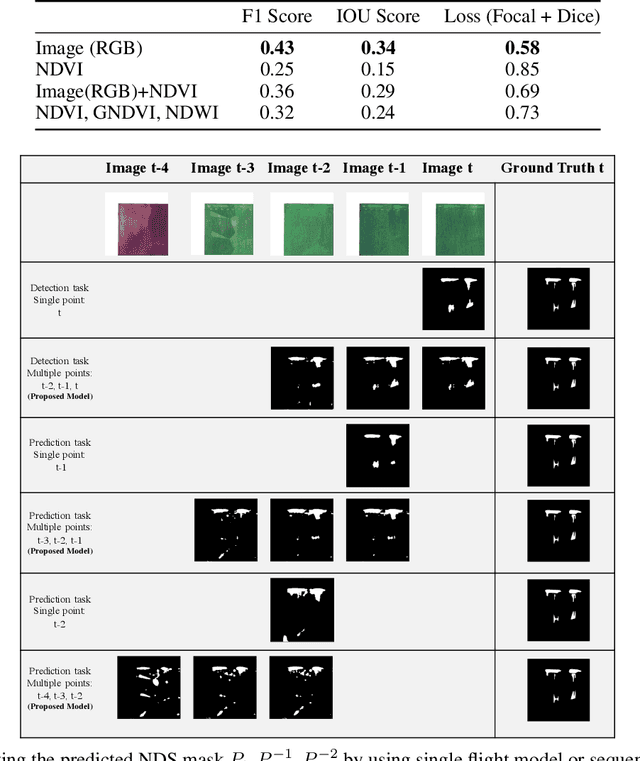Gisele Rose
Detection and Prediction of Nutrient Deficiency Stress using Longitudinal Aerial Imagery
Dec 17, 2020



Abstract:Early, precise detection of nutrient deficiency stress (NDS) has key economic as well as environmental impact; precision application of chemicals in place of blanket application reduces operational costs for the growers while reducing the amount of chemicals which may enter the environment unnecessarily. Furthermore, earlier treatment reduces the amount of loss and therefore boosts crop production during a given season. With this in mind, we collect sequences of high-resolution aerial imagery and construct semantic segmentation models to detect and predict NDS across the field. Our work sits at the intersection of agriculture, remote sensing, and modern computer vision and deep learning. First, we establish a baseline for full-field detection of NDS and quantify the impact of pretraining, backbone architecture, input representation, and sampling strategy. We then quantify the amount of information available at different points in the season by building a single-timestamp model based on a UNet. Next, we construct our proposed spatiotemporal architecture, which combines a UNet with a convolutional LSTM layer, to accurately detect regions of the field showing NDS; this approach has an impressive IOU score of 0.53. Finally, we show that this architecture can be trained to predict regions of the field which are expected to show NDS in a later flight -- potentially more than three weeks in the future -- maintaining an IOU score of 0.47-0.51 depending on how far in advance the prediction is made. We will also release a dataset which we believe will benefit the computer vision, remote sensing, as well as agriculture fields. This work contributes to the recent developments in deep learning for remote sensing and agriculture, while addressing a key social challenge with implications for economics and sustainability.
 Add to Chrome
Add to Chrome Add to Firefox
Add to Firefox Add to Edge
Add to Edge